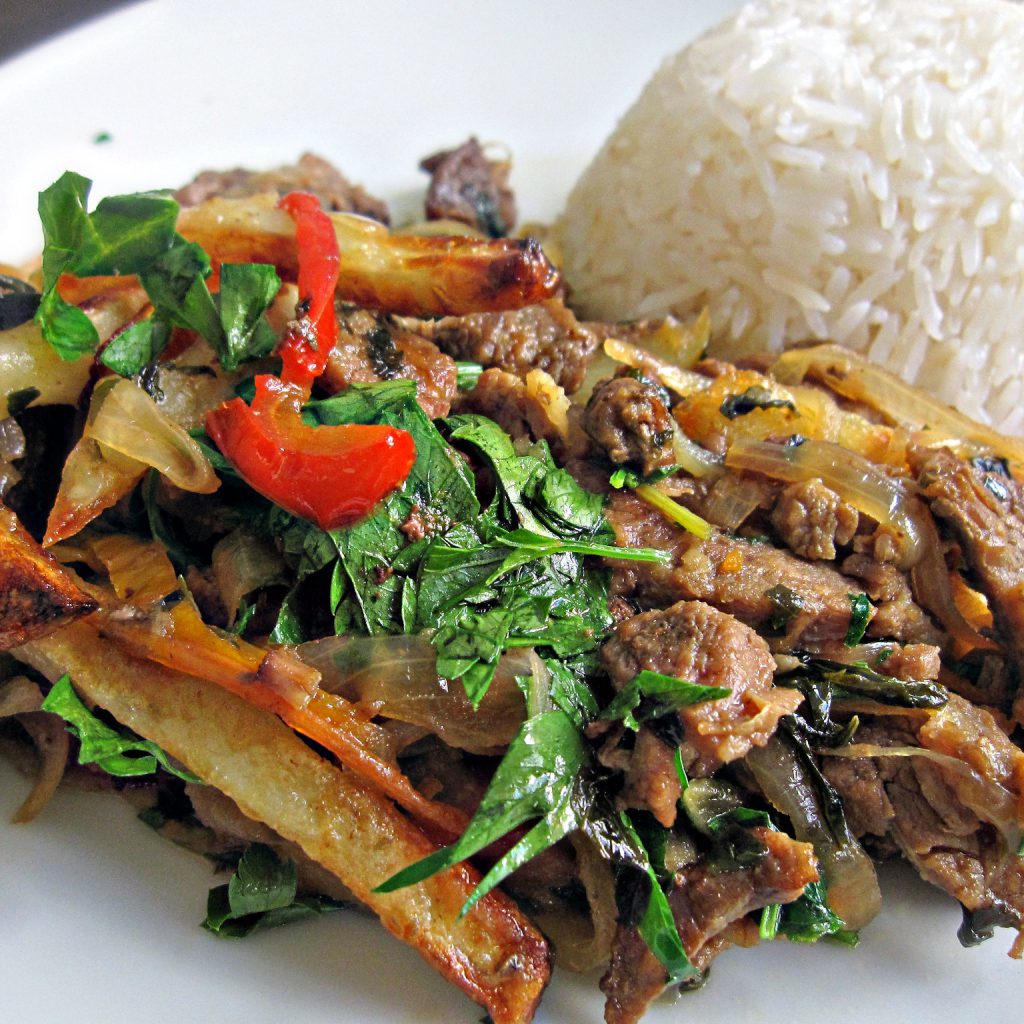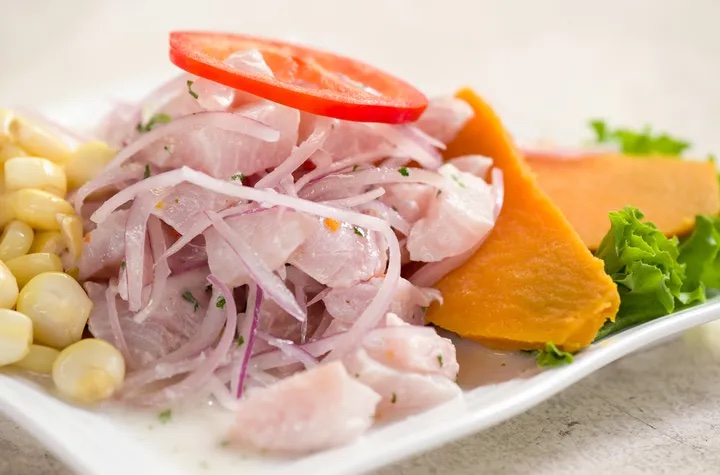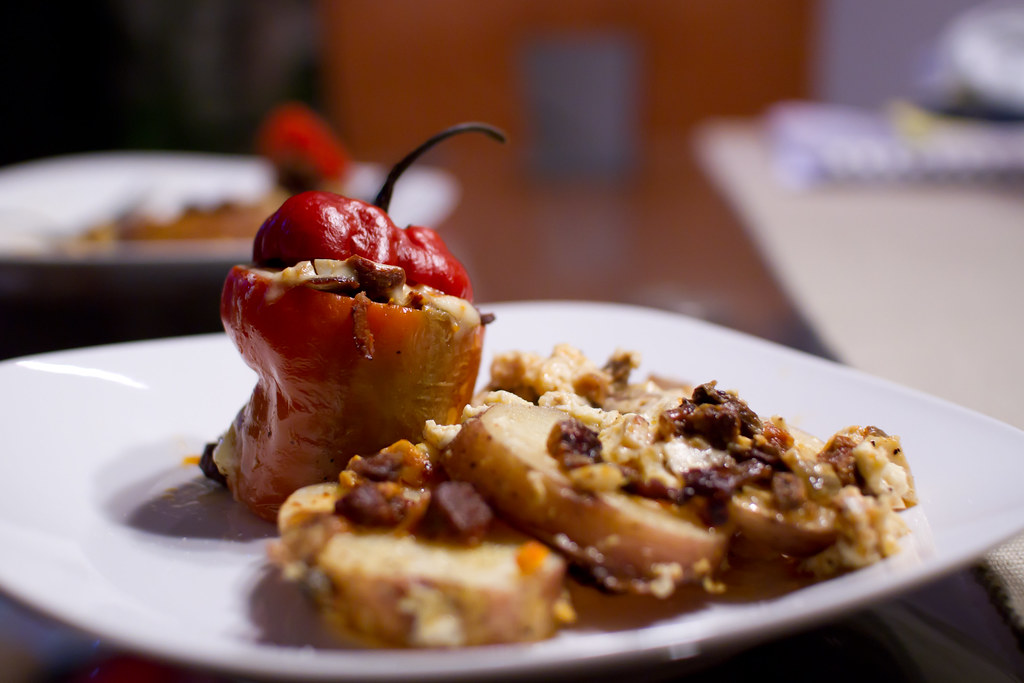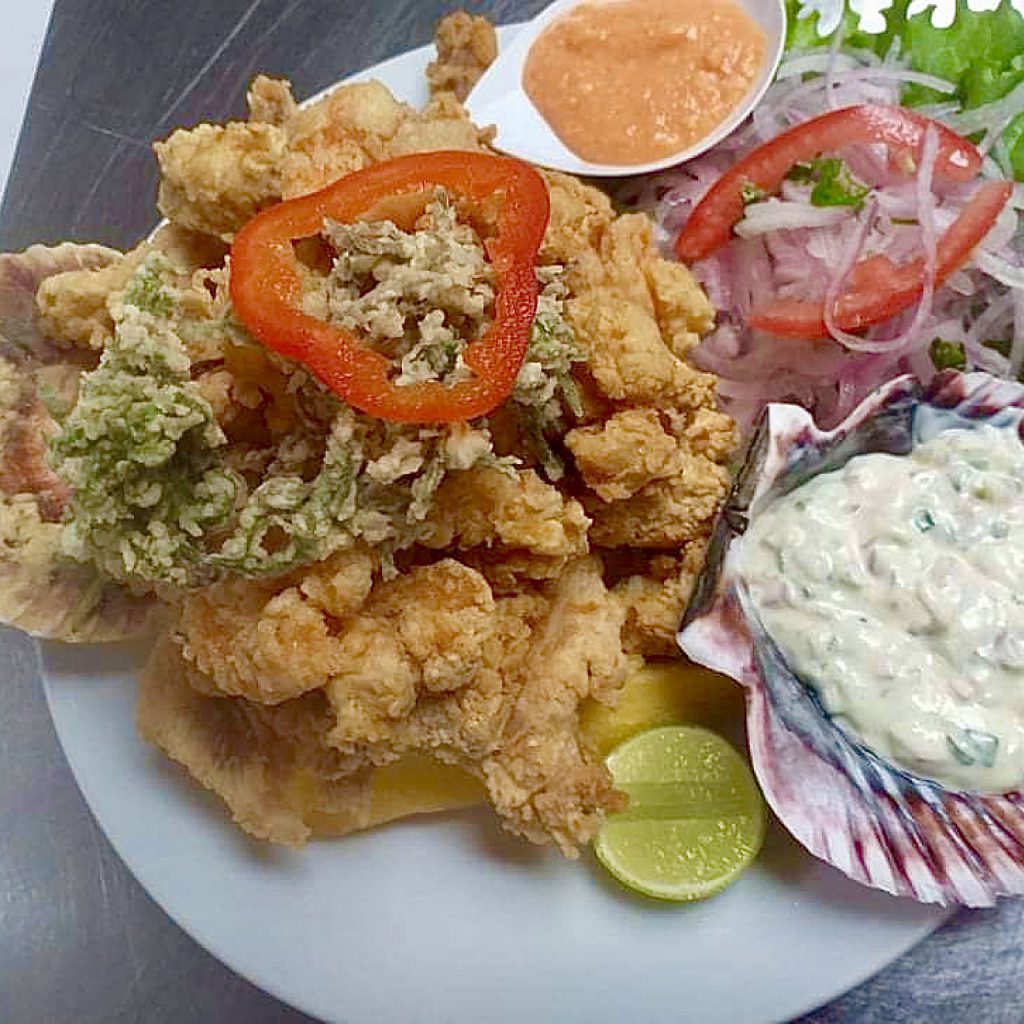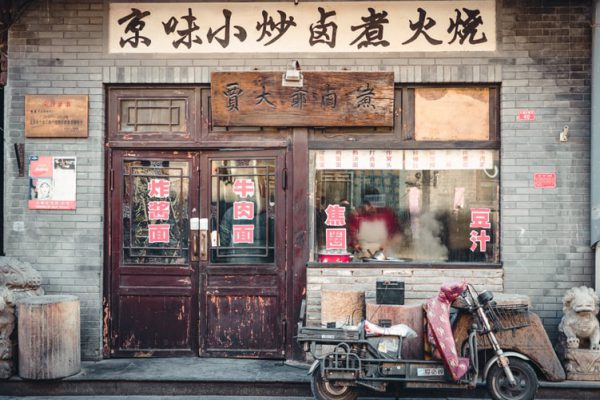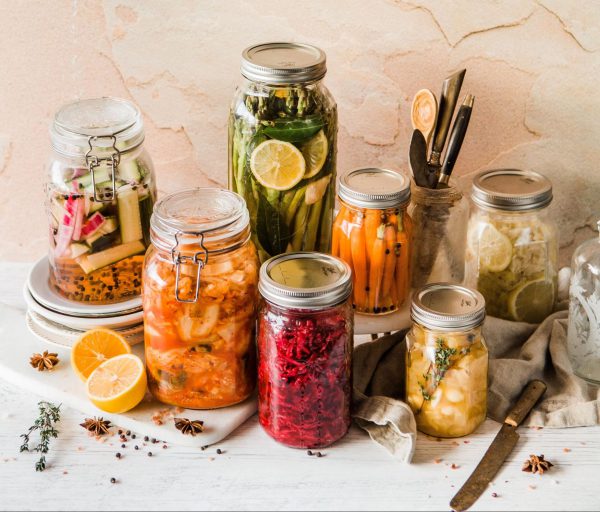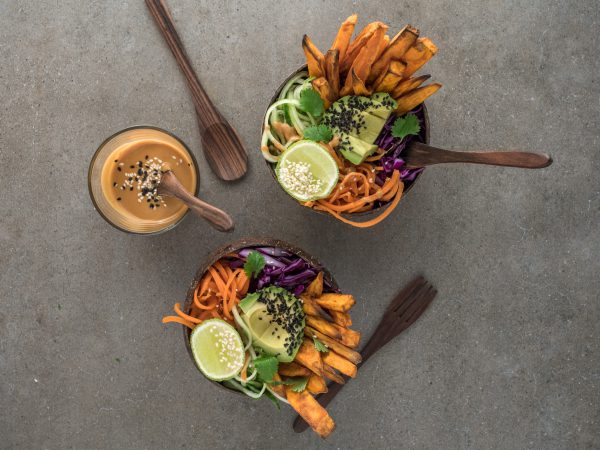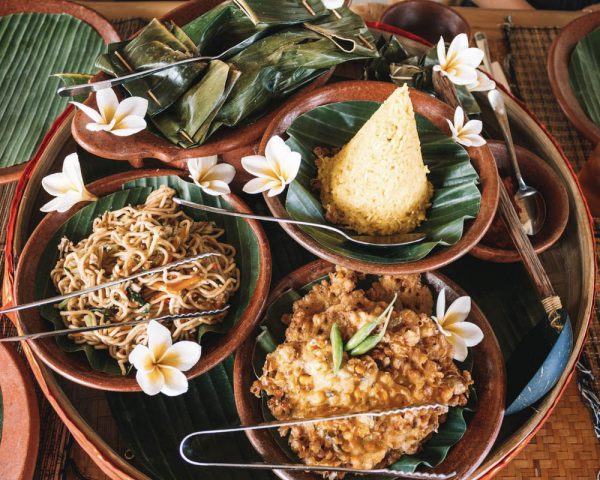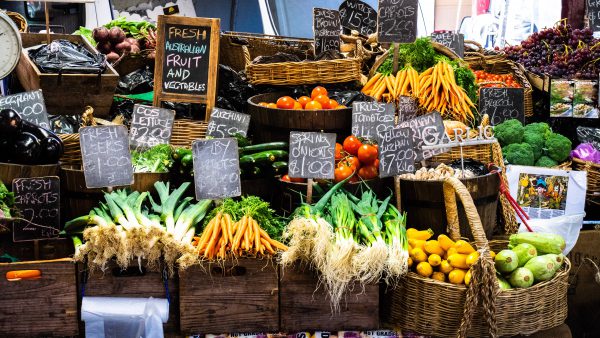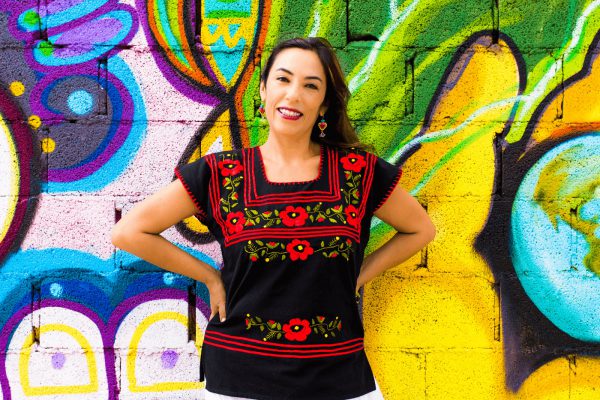Last Updated on March 05, 2023
Peru has always been an extraordinary destination for gastronomy. The ingredients are as diverse as they get, the dishes are creative and extraordinary, and all the foodies who have visited the country returned to their home countries satisfied and with a lot to tell.
Peruvian cuisine seamlessly melds ancient gastronomy with modern, and when you pair that with the diversity of the ingredients, the impossibly eclectic culture, and the chefs’ passion — a big shout out to the culinary masterminds Virgilio Martínez and Gastón Acurio — you get nothing but a plate of pure deliciousness.
In fact, the country has been selected as the “World’s Leading Culinary Destination” by World Travel Awards and is home to 5 of the best restaurants in the world. So, where to start with Peru’s delicacies? Read on to find out the 20 foods you have to try in Peru.
Peruvian Gastronomy
Before delving into your checklist of what to eat in Peru, we have to stop and talk about Peruvian gastronomy first, as a little bit of context will make you appreciate what you eat there even more.
Biodiversity and Food

Peru is one of the most biologically diverse places in the world. If you’re surprised to learn that there are over 3,500 potato varieties grown across the country, let us bedazzle you with some more numbers.
Peru has more than 200 protected natural areas and 84 of the 117 life zones on the planet, followed by 14 national parks, 15 national reserves, 9 national sanctuaries, and 11 restricted zones. The country is home to over 1,800 bird species and 10% of all mammal, fish, and reptile species on the planet.
Thanks to the abundant natural diversity, life flourishes everywhere in Peru, from the coastal cuisine of the Pacific Ocean to the high grounds of the Andes. When it comes to food and cuisine, the biodiversity in the region means infinite combinations of ingredients.
Crossing Cultures
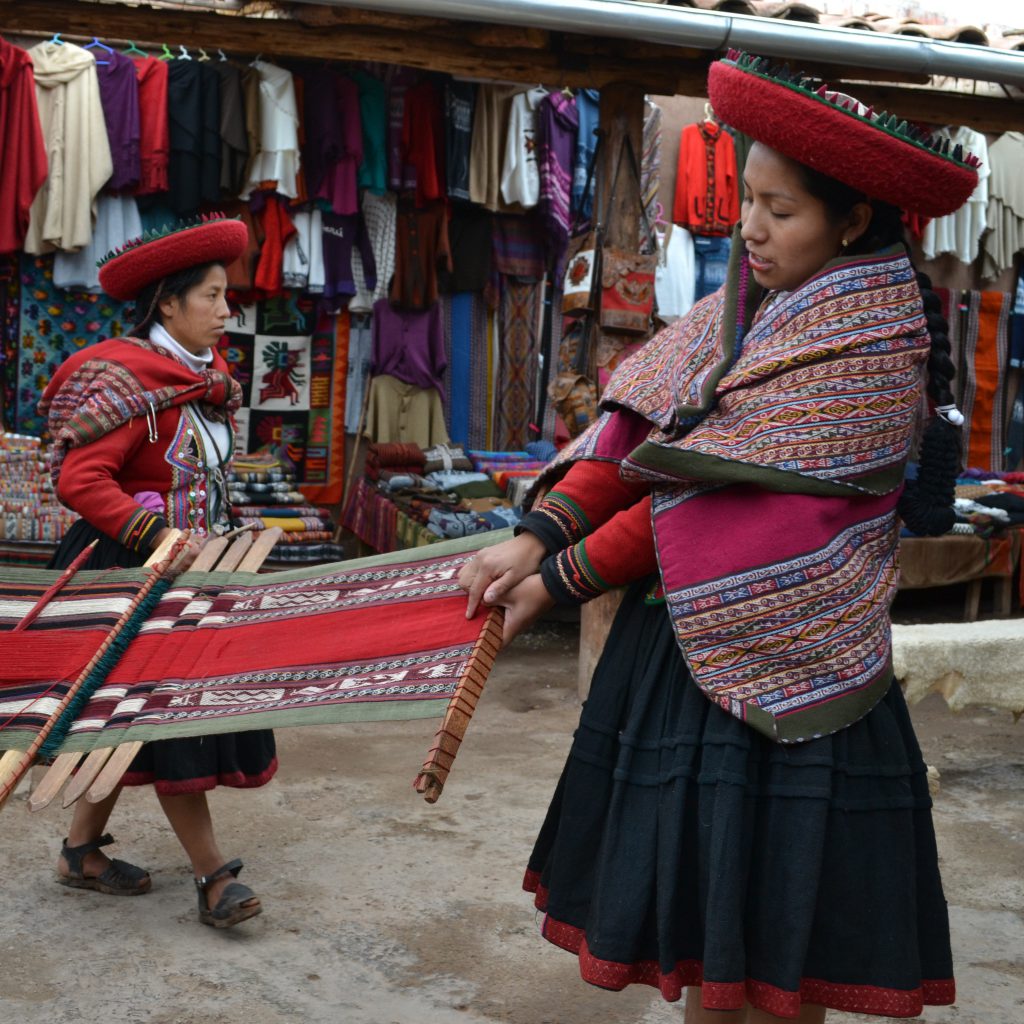
The first thing you should know about Peruvian cuisine in its modern form is that the dishes incorporate a huge number of indigenous ingredients brought to the country by the Spaniards. The chefs and cooks incorporate the ingredients using a range of techniques from all over the world, including Europe, East Asia, and Africa.
For example, cuy chactado (roasted guinea pig) and pachamanca (hot stone ovens in a hole in the ground) are still in use. However, typically Moorish ingredients, such as spices, onions, tomatoes, and honey desserts, also play a big part in the menu.
Also, when Chinese workers emigrated to Peru during the 19th century, they brought their woks and stir fries with them, creating a super popular culinary trend called chifa. Likewise, the Japanese immigrants in the country combined the best of both worlds, creating a wonderful fusion cuisine called Nikkei.
Unique Ingredients and Combinations
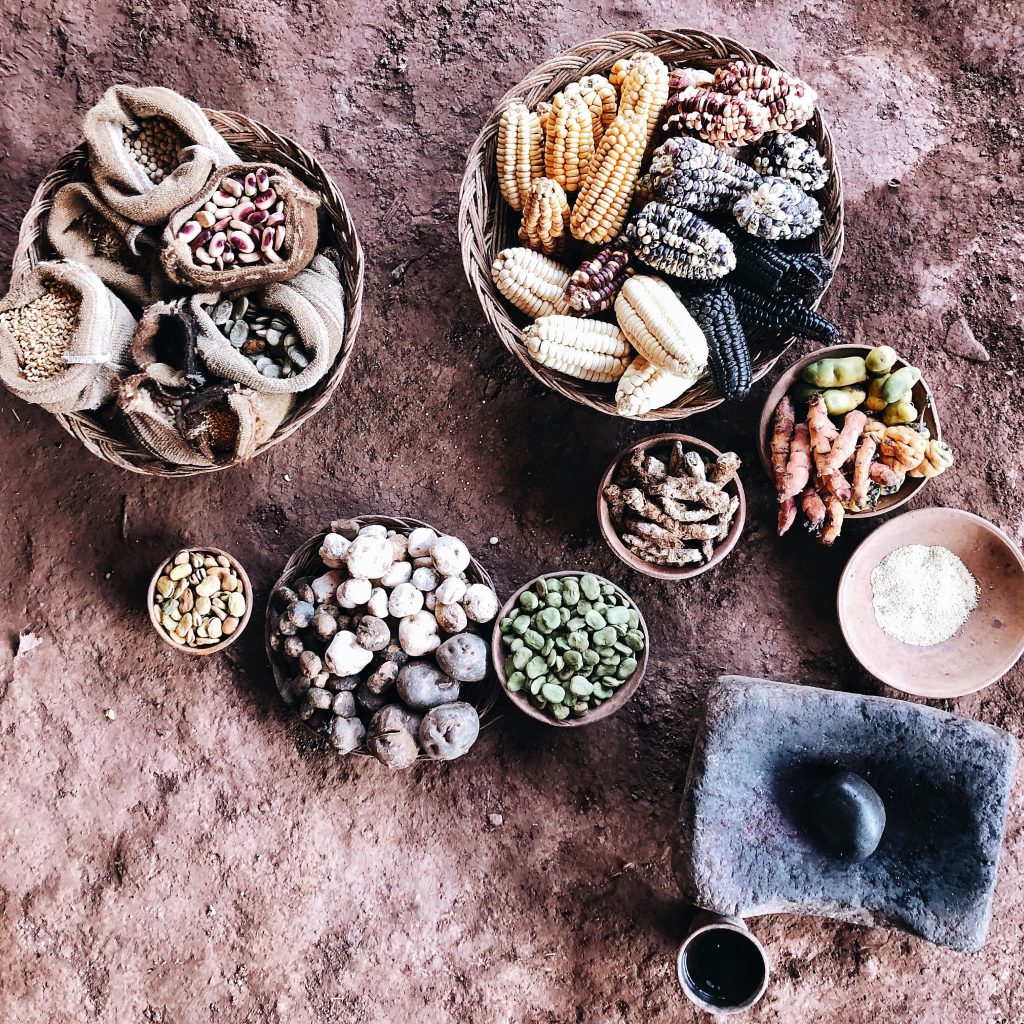
The first thing you’ll notice about the food in Peru — after the fact that it’s spicy — is that it uses opposites a lot in every sense. Like a painting that hits you with transverse colors, Peruvian cuisine incorporates bold acidic flavors with starchy texture, mixes sweet and sour, and doesn’t hesitate to combine cold and hot on a single plate.
What’s more, the cooks incorporate some ingredients that the rest of the world might not be aware of, such as:
- Yucca: a root commonly boiled or fried as a side dish, which looks like French fries, but sweeter, milder, and packed with a nutty flavor.
- Lúcuma: a sweet, orange-colored fruit indigenous to the Andes region.
- Choclo: a type of corn with large, white kernels. Choclo is denser and chewier than regular corn and has a distinct nutty flavor.
- Aji peppers: ajis are chili peppers with a pungency that ranges from mild to very hot. You have aji amarillo, rocoto, aji limo, aji charapita, aji mirasol, and many more species of chili peppers that could turn your face red with only a single bite.
- Maíz Morado: another type of corn with a deep purple color. This one is quite sweet and is used as the primary ingredient of chicha – the purple drink you’ll find on most corners.
Getting hungry? Here are the 20 dishes you should seek out while you’re in Peru.
1. Lomo Saltado
Lomo saltado is probably the most recommended dish in Peru. It’s a fusion dish combining Peruvian and Asian flavors. You can think of it as a beef stir fry with a Peruvian twist. The tender marinated slices of beef and some rotating vegetables are stir-fried with soy sauce and served with rice and French fries.
2. Causa Rellena
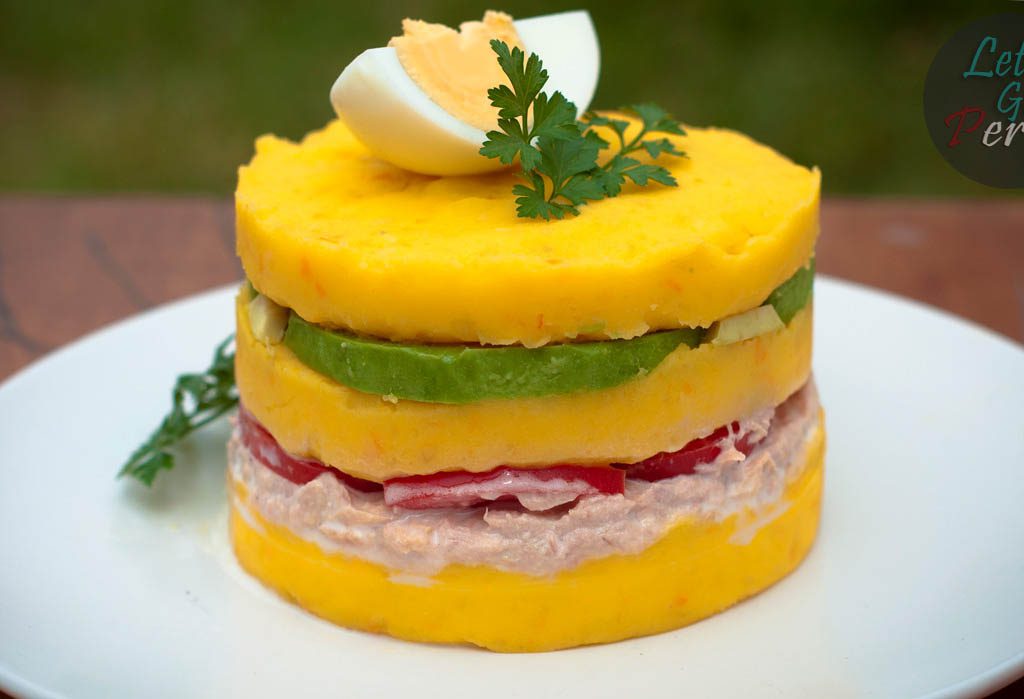
By Lets Go Peru
Causa is a well-known type of cold, layered salad usually served as an appetizer. It’s made by stacking mashed potatoes, avocado, onions, and some protein (usually chicken or tuna with spicy aji sauce). Once you have the base, you can improve the causa with different toppings like plump shrimp dipped in a special seafood sauce.
Legend has it that during the Peruvian Independence from Spain, the famous Peruvian national hero Jose de San Martin called the nation to support the cause by providing food for the soldiers. At the time, causa (a word that also means “cause” in Spanish) was a very popular dish to send to the fronts, and that’s how it got its name.
If you’d like to feel included in the cause, check out this cooking class, where you’ll learn to prepare causa rellena, lomo saltado, and chicha morado.
Ceviche is a dish created with fresh, raw white fish preserved in citrus juices originating from Peru. In the past, the dish was made using bitter orange juice, but nowadays, lemon or lime juice is preferred.
Ceviche is prepared using the freshest fish possible — sashimi-grade — and since it’s uncooked, it must be eaten immediately. Although it can be served as a main course with other Peruvian side dishes, it’s usually served as an appetizer.
If you’d like to try your hands at preparing this iconic Peruvian dish, after a tour of a local farmers market to get fresh produce, take a look at this cooking class in Miraflores, Lima, with an exotic fruit tasting as a bonus or this authentic ceviche and pisco sour cooking class where you’ll learn a lot about Peruvian way of preparing delicious fish.
4. Cuy Frito / Cuy Chactado / Cuy a la Piedra

By triz.
In South American countries like Peru, Bolivia, and Ecuador, cuy, or guinea pigs, have been consumed as food since the Incan times. So, your visit to Peru might be the perfect time to step out of your culinary comfort zone.
Thanks to their small size and quick reproductive rates, guinea pigs can be raised anywhere, even in urban areas. This makes cuy a very popular dish throughout the country. It’s typically eaten roasted, grilled, or deep-fried at a Peruvian cuyera.
The dish is served with a set of appetizers or salads, corn on the cob, rice, potatoes, and sweet potatoes. Locals eat cuy with bare hands, so if you want to do it properly, make sure you have some napkins on hand in case things get messy.
5. Empanada
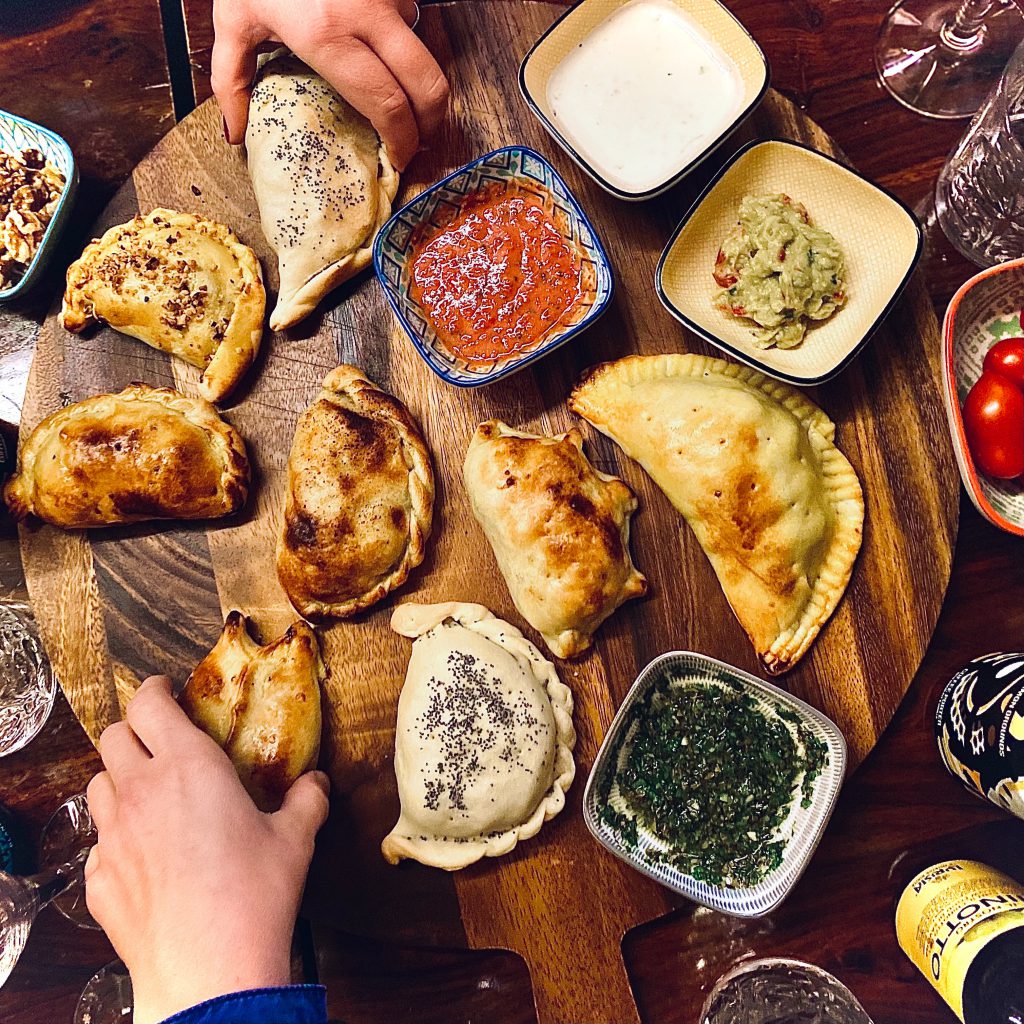
Empanada is greatly popular in Peru, just as it is in Columbia and other South American countries. The origin of the dish is Moorish— the name literally translates to roll in pastry dough in Spanish. Latin America has accepted and adjusted the dish in its own way.
There are many different recipes for empanadas, but generally speaking, the dough is folded over a filling of meat, potatoes, veggies, eggs, raisins, spices, and other ingredients. They are common street food in Peru. The most common Peruvian empanada (baked or fried) is stuffed with ground beef, onions, chives, olives, garlic, hard-boiled eggs, cumin, coriander, and black pepper.
6. Arroz Con Mariscos

If you ask a Peruvian about their most popular seafood dishes, chances are they’ll suggest you try arroz con mariscos. And if you’re a fan of Spanish paella, you definitely have to try this seafood rice stew made with unique Peruvian ingredients.
Arroz con mariscos directly translates to rice with shellfish. The base is a batch of spiced rice enriched with vegetables like carrots, peas, and red peppers. The superstar of the show is the assorted shellfish that range from clams, shrimps, mussels, octopus and squid slices, and scallops. Top that with a pinch of parmesan cheese to bring out all the shellfish flavor with some acid, and you have a dish from a seafood lover’s dreams.
7. Arroz Con Pato
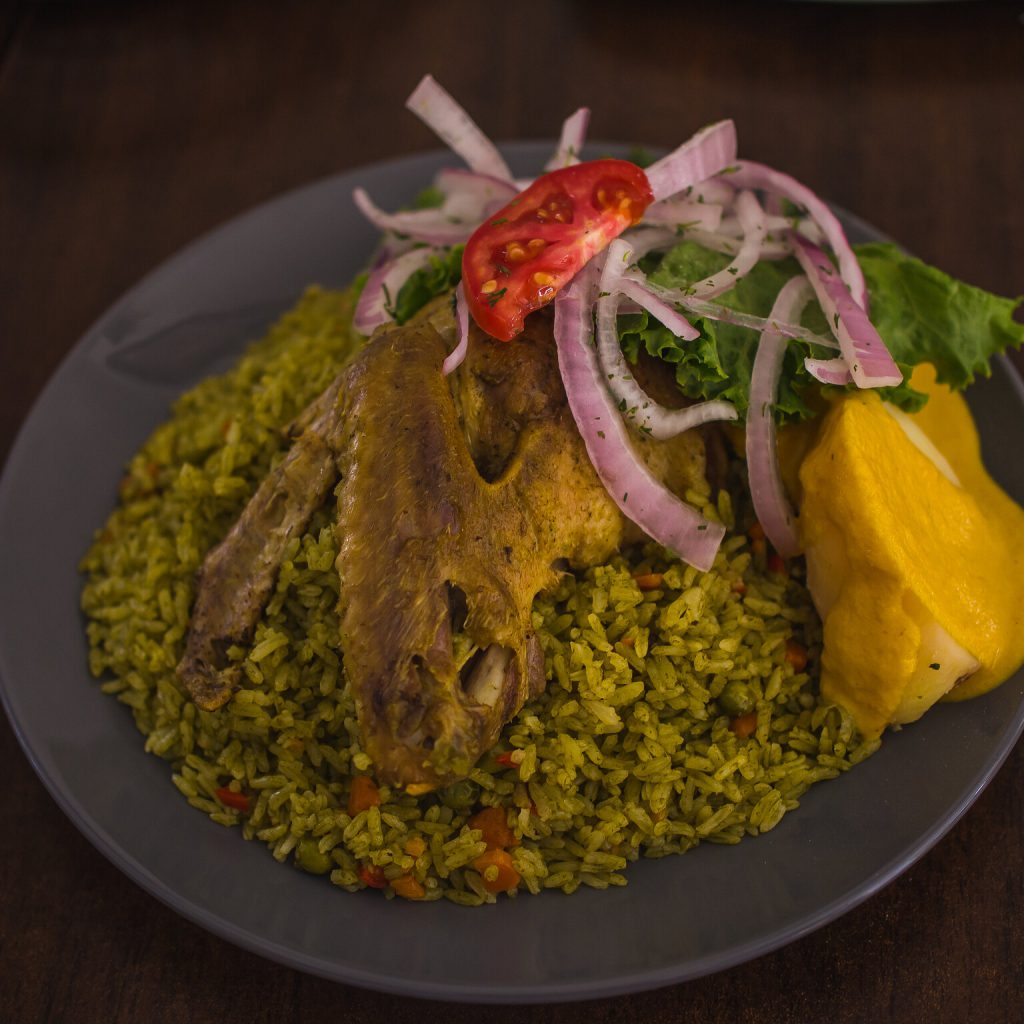
By MAr Aparicio
Arroz con pato is a traditional Peruvian dish that’s actually quite famous in Portugal too.
This hearty recipe is essentially duck with rice, but leaving it there would be oversimplifying the dish. First, you might be surprised that the rice has a greenish color, as it’s prepared with beer and herbs, particularly cilantro, which also gives the dish its distinctive flavor. The duck is lightly fried before it’s cooked with a special broth, pisco de sour, and beer. The meat over the rice ranges from tender, delectable confit of leg and thigh to crispy, grilled breast meat. The whole plate is garnished with raw onions and fresh herbs.
8. Aji de Gallina
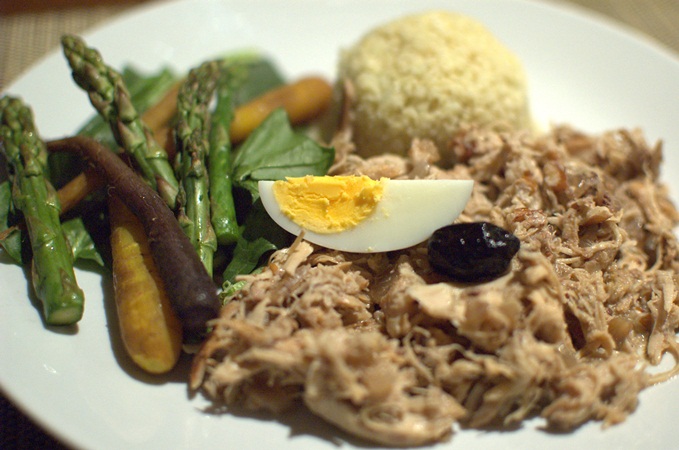
By Gaby Mora
Aji de gallina is the ultimate Peruvian comfort food that consists of chicken stew made with aji peppers and a cream sauce. The dish is pretty similar to manjar blanco, or blancmange, which originated in Catalonia, Spain. Considering the Arabic influence in the Iberian Peninsula, aji de gallina is a real recipe for mixed cultures.
The dish is essentially shredded chicken rolled in a creamy sauce enriched with nuts and chili peppers. The nutty, creamy sauce tames the aji’s delicious, fairly fiery taste to a cozy warmth. The sauce is mild but piquant.
The meal shows Peru’s fondness for sauces poured over or frequently cooked with meats and vegetables and often thickened with chilies, cheese, cream, or even bread. In the case of aji de gallina, the sauce is combined with the chicken and served over rice with cooked potatoes and black olives, creating a rich, vibrant yellow chowder that shimmers on the plates at restaurants and homes throughout Peru.
9. Anticuchos de Corazón
The heart of a cattle can be more flavorful than a ribeye, thinner than filet mignon, and simply succulent when licked over by open flame. To make anticuchos de corazón, the crimson heart of alpaca or cattle is often chopped into one to two-inch cubes and marinated in vinegar, cumin, aji, and garlic before it’s grilled over charcoal to a medium rare with slightly burned edges.
You can have some anticuchos de corazón at a restaurant, but they are much more popular on the streets in Peru. You’ll spot vendors serving anticuchos de corazón on skewers with sliced corn or potato and a drizzle of lime. Anticuchos can be made with pretty much any type of meat, fish, or chicken, but the original cardiovascular one reigns supreme.
10. Rocoto Relleno
Rocoto, or locoto, is a type of pepper that is native to the Andes mountains. They resemble red miniature bell peppers in shape as they’re 5 to 7 cm in diameter. Underneath the hood, these peppers are super spicy, reaching up to 100,000 Scoville heat units. That’s about ten times hotter than your average jalapeno.
A variation of the dish, rocoto relleno are stuffed peppers with a mixture of ground beef, garlic, onion, raisins, olives, herbs, and spices and topped with queso fresco (fresh cheese) before they are roasted in a sauce of milk and eggs.
Rocoto relleno is definitely not a kid’s meal, as it will hit you on the first bite. But the filling, the cheese topping, and the creamy, eggy sauce cool the heat off quite quickly, leaving you anticipating the next heat wave.
11. Pollo A La Brasa
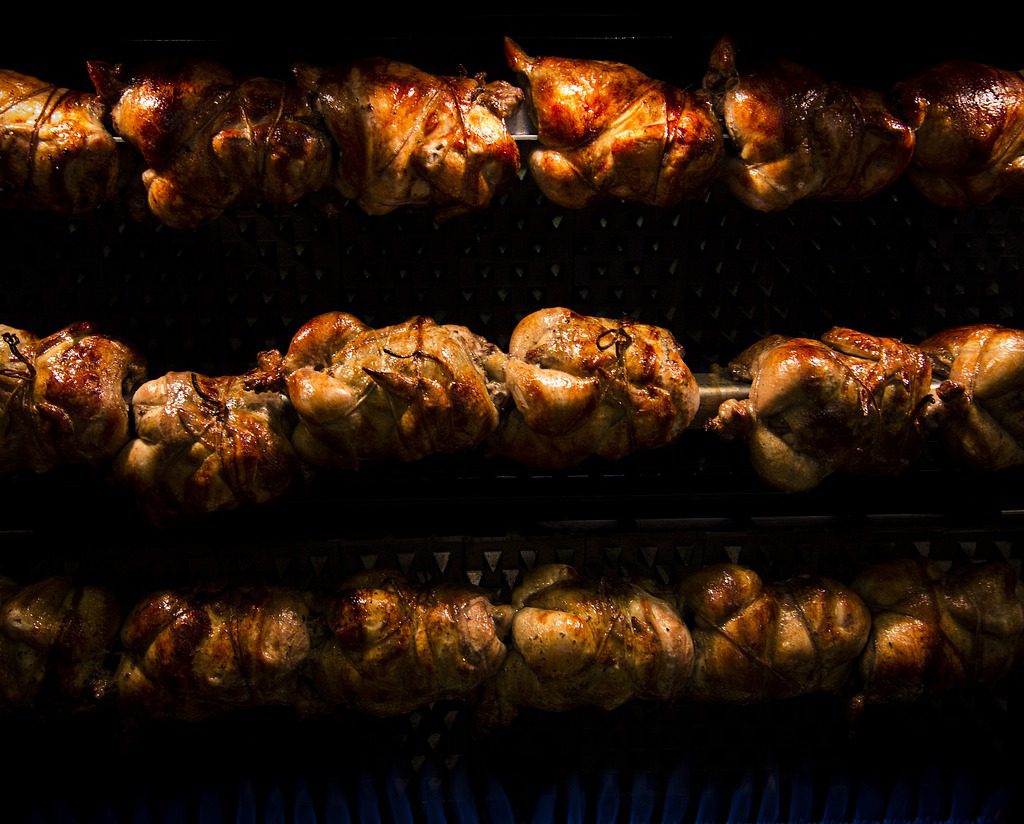
Another vastly popular dish in Peru, pollo a la brasa is Peruvian rotisserie chicken sold on Peruvian stalls, called pollerías, around the world. Similarly, in Peru, it’s almost always cooked outdoors. The chicken is coated with an aji sauce and roasted until the skin turns into a trademark crispy golden brown. The meat is served with thick French fries, a salad of lettuce, tomato, cucumber, avocado, and other raw vegetables, or a hot salad made of cooked beans, beets, and carrots. And don’t forget the dipping sauces.
12. Tiradito de Pescado
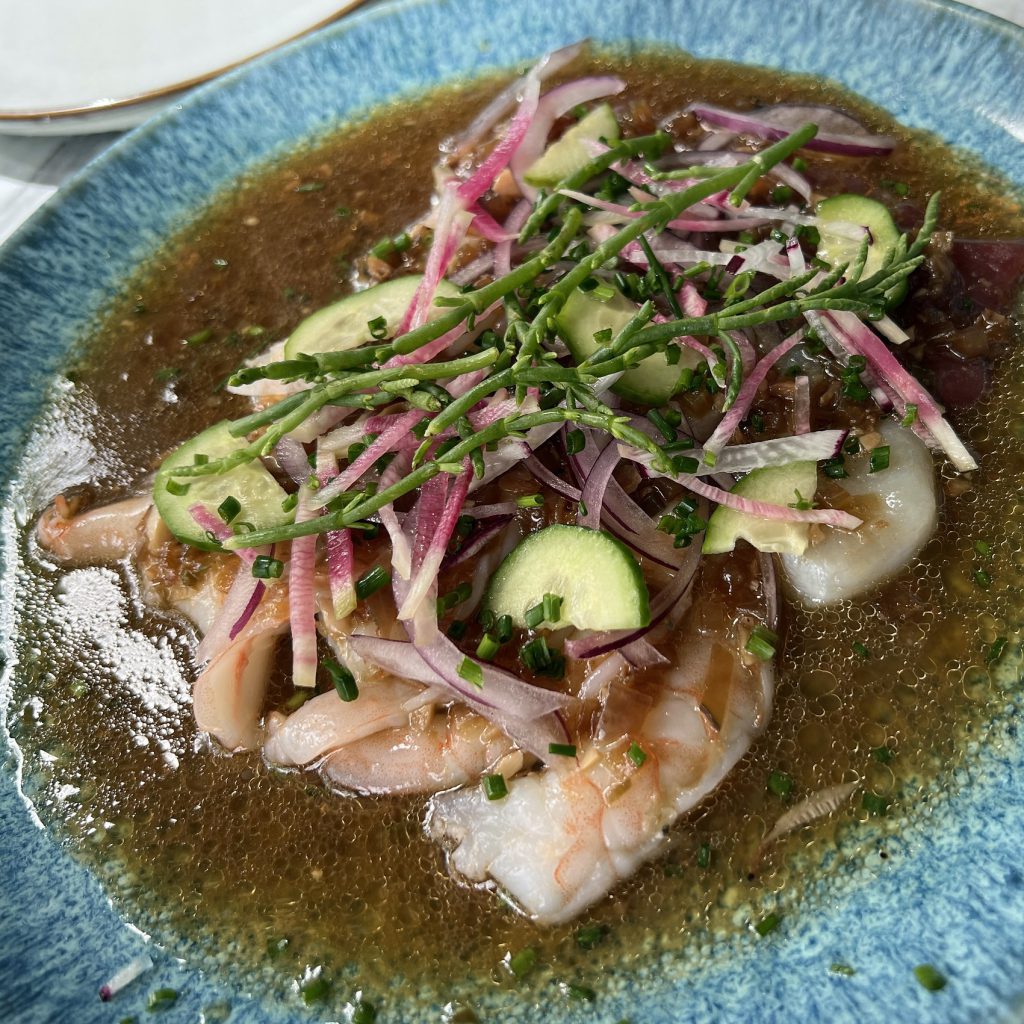
By Kirk K
It’s easy to confuse tiradito de pescado with ceviche — some even refer to the dish as Japanese ceviche —- but it’s a very different dish than that. Coming from the Nikkei cuisine, traditio de pescado is a Japanese-inspired Peruvian fish dish.
It’s actually a crossover between ceviche and sashimi with a unique, strong flavor. You have the fish — mild or intense, depending on the type of fish used — and aromatics like garlic, ginger, lime juice, and an aji amarillo puree.
Tiradito isn’t a dish you can master on the first try. The subtleties in marination, the combination of flavors, and the technique are crucial to put together this delicious dish. The citrus, spicy pepper, vegetables, and all the aromatics need to highlight the flavor of fresh fish rather than overpowering it. When done right, tiradito is simply a delight. Check out this Peruvian classics cooking class if you’re intrigued to learn about its secrets.
13. Seco De Carne
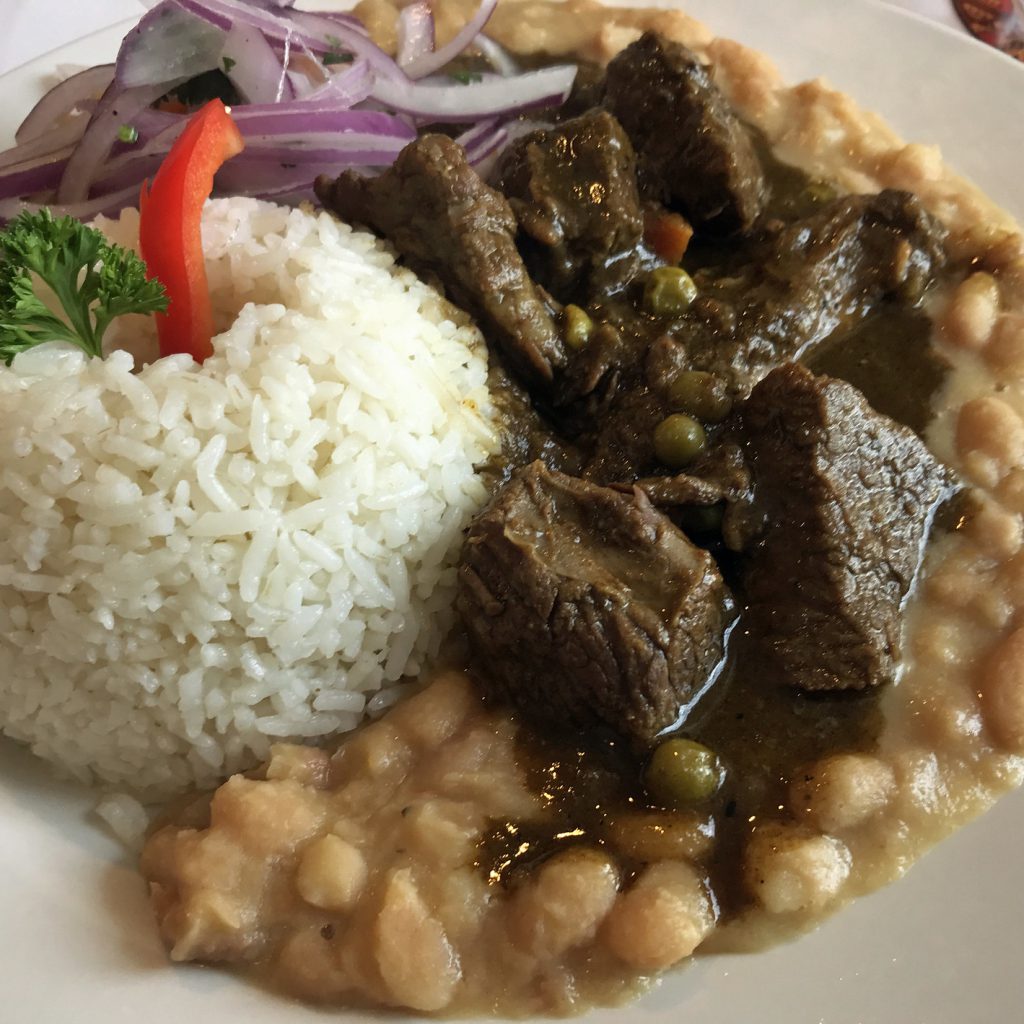
By Kirk K
Vegetarians, look away because we’re about to talk about the meatiest meat stews out there. Not all Peruvian dishes require incredibly fine-tuned flavors. Seco de carne is a simpler dish in terms of the number of ingredients and doesn’t need anything extra, as it already has a rich, deep flavor with fall-apart tender pieces of meat.
It’s a hearty beef stew with generous cuts of meat cooked in a thick beef broth, cilantro, and fermented corn, adding a unique flavor. It’s drizzled with olive oil to finish and is usually served with fluffy rice and canary beans on the side. Seco de carne is especially good to have during the colder months.
14. Jalea
Jalea is mixed fried seafood laid on top of a lime-marinated salad. The amount of different seafood available in Peru might boggle your mind. However, if you consider the country’s coastline is 2400 km through the fertile Pacific Ocean, the wide variety of seafood is impressive rather than surprising.
Jalea means jelly in Spanish, but don’t confuse the dish with some sort of jelly dessert. Jalea is a fried, savory main course with a strong kick of lime. Squid, octopus, prawns, shrimp, and fish are simply dipped in chuño, potato flour, or batter before deep-fried for a golden brown crunchy coating. It’s simply irresistible!
15. Pachamanca
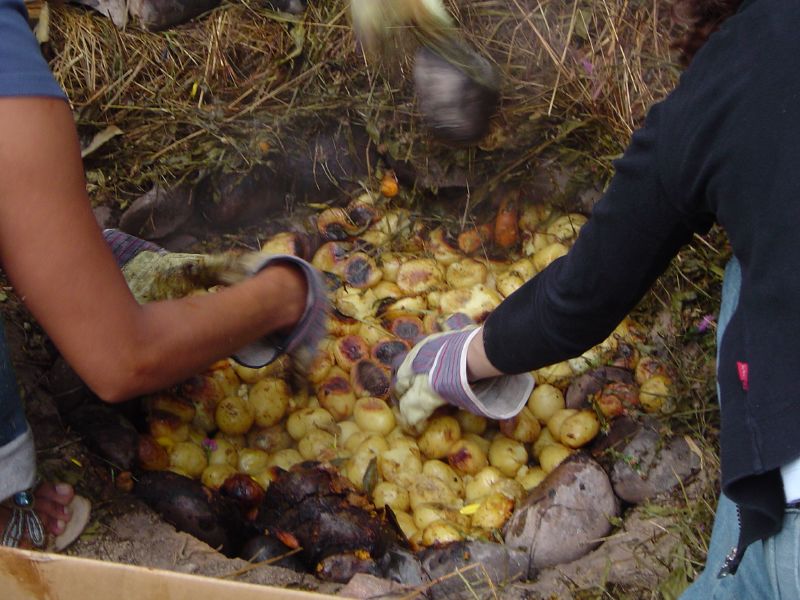
Pachamanca is an old dish that has been cooked in the Andes region for more than eight thousand years. It’s so culturally significant that it was declared a Peruvian National Cultural Heritage in 2003. In Quechua, pacha means earth, and manka means pot, taking its name from the oven formed of hot stones used to cook it — also known as hautia.
The dish includes a sort of meat, such as pork, beef, chicken, or cuy, seasoned with a mixture of spices like chincho, peppers, and huacatay, along with others, depending on the chef’s palate. The seasoned pieces of meat and vegetables like potatoes, corn, yuca, and cassava are baked in a hautia oven.
Pachamanca isn’t an everyday dish as its preparation is quite tedious — you need to dig a hole in the ground to cook it. Incans used to prepare it mainly during February and March to celebrate the upcoming spring harvest. Today, you can find it in restaurants in Lima or Cusco, but the most authentic pachamanca experience takes place in the Sacred Valley of the Incas — only an hour’s ride from Cusco — nestled in between snow-capped Andes Mountains.
16. Papa A La Huancaina

By Jason Perlow
Papa a la huancaina, or potatoes in Huancayo style, is a hearty, creamy, and savory Andes delicacy you just have to try. The potatoes indigenous to the region are boiled and turned into a creamy lump with a mortar and pestle set or a blender, depending on the texture the cook is after. Then a yellow, spicy, creamy cheese sauce is poured over the boiled and mashed potatoes generously.
The yellow heap of carbs and sauce is topped with a boiled egg and black olives. It’s common to serve it with yucca, crudites, and corn. It also can be served as a topping for pasta or risotto, which turns out even more delicious than you expect, or along with the roasted beef steak.
If you’re like us, you won’t be able to get enough of this creamy wonder. If you’d like to make it at home, join this cooking class in Lima, where you’ll prepare some delicious papa a la huancaina with octopus along with seven other delicious Peruvian dishes.
17. Tequeños

By piapoco22
Tequeños are the ultimate party food that is a must-have at Peruvian celebrations. You can think of them as cheese-filled wonton fingers served with guacamole, aioli, or spicy rocoto cream sauce.
Even though they are originally from Venezuela, Peruvians love these bite-sized crunchy fingers. They are the ones who took the filling game to another level — Venezuelan tequeños simply consist of plain dough filled with cheese.
Tequeños are so popular that almost every restaurant has them on their menu as an appetizer. If you have tequeños in a couple of different restaurants, you’ll notice that they are rarely the same. That’s because the fillings vary from meaty ones to ones with various vegetables. And the type of cheese can change depending on what’s available in the kitchen.
18. Picarones

By APEGA Sociedad Peruana de Gastronomía
Picarones, or a picaron, is a doughnut resembling buñuelos, a pastry that the Spaniards brought to the region. But unlike buñuelos, picarones aren’t only made of eggs and flour. The Peruvian twist is squash, a local type of squash, and sweet potatoes.
The vegetables are boiled until they are tender and mashed into a smooth puree before they are added to a dough mixture with yeast. When fried, the fermented dough turns into a heavenly fluffy doughnut. Then a generous amount of chancaca is poured over the donuts, a syrup made of raw sugarcane and flavored with citrus.
You might think the impurities in unrefined sugar spoil the taste, but they add a refreshing kick to the syrup that’s impossible to find anywhere else. If you’re curious to find out how this authentic dessert is made, you can always join our food tour and cooking class in Lima. As part of the class, you’ll visit different food markets across the city and learn to make picarones along with other landmark dishes.
19. Leche De Tigre
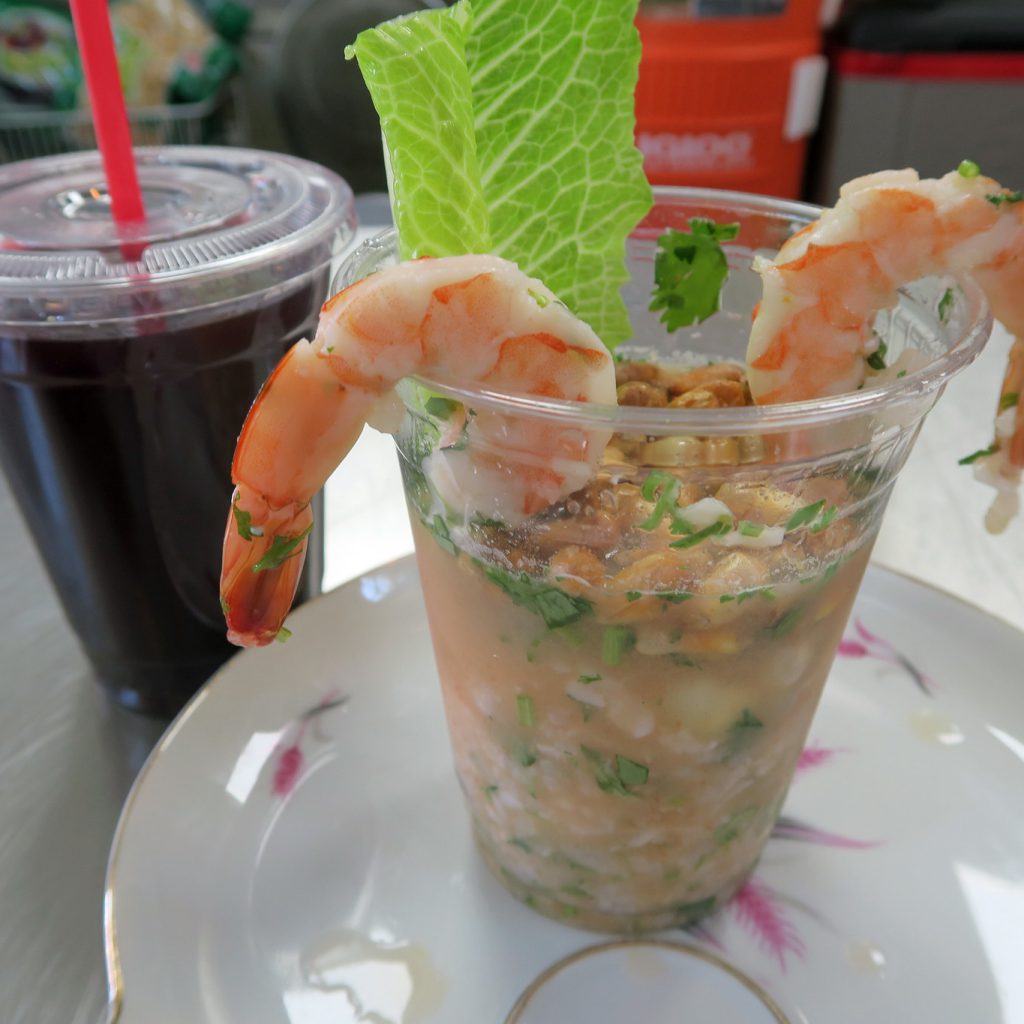
By Kirk K
Leche de tigre (tiger milk) is citrus-based snake oil or a marinade used to cure pretty much any seafood. The other ingredients are aromatics, chiles, and ceviche stock, which creates wonders with raw fish. As much as it’s a marinade, it’s a fishy, creamy cocktail that’s considered an aphrodisiac and a hangover cure in Peru.
The recipes vary depending on where you are and the mood of the chef. It can be acidic, spicy, creamy, fresh, or savory. You can also have it as an alcoholic cocktail with vodka or white wine added to the mixture.
20. Mazamorra Morada Y Arroz Con Leche
Mazamorra morada and arroz con leche is a mysterious-looking pudding that most Peruvian grow up eating. It’s a combination of mazamorra morada, or purple corn pudding, and arroz con leche, or rice pudding.
Mazamorra morada is made of ishkupcha, a dish made of lime juice and yellow corn, sweet potato flour, pineapple, and spices that makes up a thick, gelatin-like pudding rich with flavor.
The purple pudding is quite delicious and intriguing by itself, yet Peruvian cooks always like to take it to the next level with a perfect complementary dish. The spicy and rich purple pudding and the milky and creamy rice pudding complement each other so well they are often referred to as combinao, or el clásico.
Broaden Your Culinary Horizon With Peruvian Food
With its infinite variety of produce, eclectic techniques and traditions, and a passion for absolutely good food, Latin America is one of the best places to eat your way through — you’d know if you ever tasted, for example, traditional Mexican food.
You can say Peru is the hope diamond of South America in terms of its tourist attractions, endless vistas, history, culture, and food. You can find the most amazing fusion of Andean, Spanish, Italian, Japanese and Chinese influences, as well as traditional recipes dating back ten thousand years ago. So put everything you know about food aside, and let Peruvian chefs redefine your palette on your visit to this gorgeous country.


